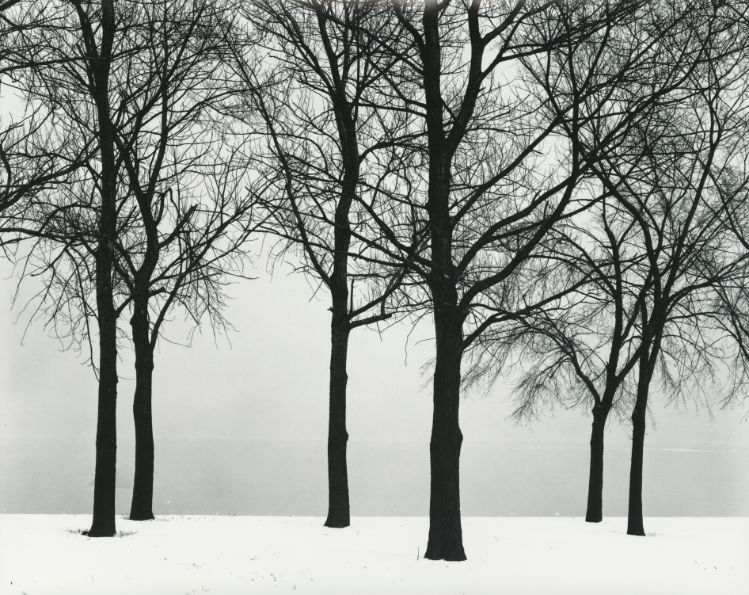The difference between the casual impression and the intensified image is about as great as that separating the average business letter from a poem. If you choose your subject selectively – intuitively – the camera can write poetry.
Harry Callahan
One of the most influential photographers in post-war America, Harry Callahan was intuitive and introverted in his work. Callahan was a self-taught photographer and worked in the General Motors Photographic Laboratories to make a living whilst he worked on his photographic projects. In 1946 he met Lázló Maholy-Nagy who asked him to join the faculty of the New Bauhaus (later known as the Institute of Design) in Chicago and in 1947 he had the first of many solo exhibitions. His work would be exhibited in 38 exhibitions at the Museum of Modern Art, New York, from 1956 to 1997, including a retrospective exhibition curated by John Szarkowski in 1976.
Every morning Callahan would go out and take photographs before returning home to make proof prints in the afternoon. He photographed the natural landscape throughout his career and spent as much time as possible outside. This photograph shows trees in a snowy landscape along Lake Shore Drive in Chicago with the water in the background shrouded in mist. It is exemplary of Callahan’s exploratory use of line and contrast. All the details of the bark and snow were visible in Callahan’s negative but he purposefully printed with high contrast to emphasise the graphic simplicity of the scene. The solid blackness of the trunks contrasts the delicate tracery of the branches. After he heard him lecturing at the Detroit Photo Guild, Callahan became highly influenced by Ansel Adams, saying that he ‘set [him] free’. Noting Adams’ technical specifications, Callahan aimed to print with a similarly rich contrast as the revered landscape photographer. ‘If you print with contrast,’ he said, ‘you begin to see differently; you begin to look at different things to photograph.’ Callahan also took on the influence of Adam’s intimate, thoughtful nature studies and sought solace in the textures and patterns of the natural world.
With the formal precision of the European Modernism that he had learnt from Maholy-Nagy, Callahan aimed to express his feelings about life through his photography. His work is imbued with great emotional resonance than other photographers associated with the Institute of Design, like Aaron Siskind. Callahan prized intuition in his work and said: ‘The difference between the casual impression and the intensified image is about as great as that separating the average business letter from a poem. If you choose your subject selectively – intuitively – the camera can write poetry.’ By distilling his subject matter to the bare essentials through composition, and then honing this simplicity in his contrast-heavy printing, Callahan intensified his photographs so that it could ‘capture a moment that people can’t always see’
(By Thea Gregory)
